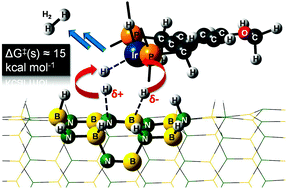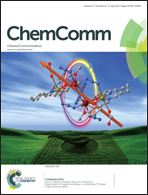Computational design of an Iridium based catalyst for releasing H2 from hydrogenated BN nanotubes†
Abstract
Through carefully calibrated density functional studies we predict that Ir pincer complexes, previously known to effectuate simultaneous proton and hydride transfer from ammonia-borane under ambient conditions, are equally efficient catalysts for the concerted dehydrogenation and subsequent release of H2 from hydrogenated boron nitride nanotubes overcoming free energy of activation accessible at room temperature.


 Please wait while we load your content...
Please wait while we load your content...